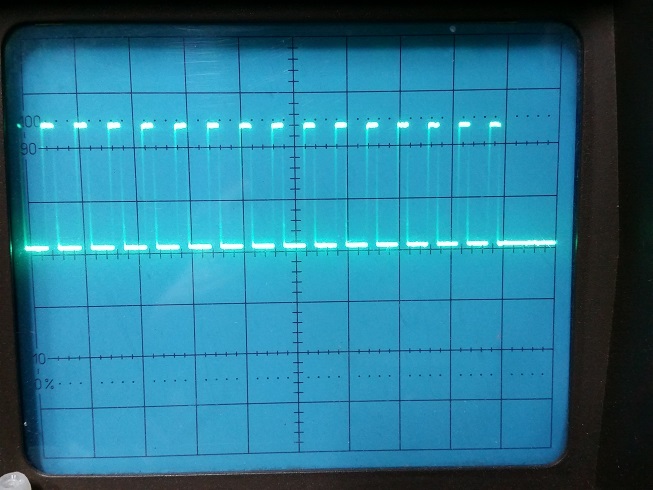Dear experts,
I am planning to use a DRV8823 in my project to drive three DC brushed motors and already have problems get it to run on the breadboard.
Until now I could not get the motor to drive at all.
After reading the datasheet and internet resources and checking my setup over and over I ran out of options and hope to get help here.
The DRV8823 is mounted on a dip48 breakout board connected to an arduino nano on a breadboard.
The PowerPAD heatsink ist NOT connected to ground and as per the datasheet there is no requirement for that (unlike DRV8848 i.e.).
The schematic is as follows:
One the right side you can see the relevant voltages as well.
To make sure that all signals are correct I connected a logic analyser and here is the outcome. Note that the protocol decoder is confirming 0xfff being sent.
And last but not least the tiny bit of arduino code in use. For easyness of reading I used bitbanging instead of SPI the interface.
#define DRVCS 4
#define DRVSCK 3
#define DRVSDA 2
void BitBang(uint16_t _send)
{
digitalWrite(DRVCS, HIGH);
for(int i=0; i!=16; i++)
{
digitalWrite(DRVSDA, bitRead(_send, i));
delay(1);
digitalWrite(DRVSCK, HIGH);
delay(1);
digitalWrite(DRVSCK, LOW);
delay(1);
}
digitalWrite(DRVSDA, LOW);
digitalWrite(DRVCS, LOW);
}
void setup()
{
pinMode(DRVCS, OUTPUT);
pinMode(DRVSCK, OUTPUT);
pinMode(DRVSDA, OUTPUT);
}
void loop()
{
delay(1000);
BitBang(0x0fff);
}
So if anyone has a hint what could be wrong please push me in the right direction.
As per now I assume the chip must be DOA...
Thank you in advance
Juergen



